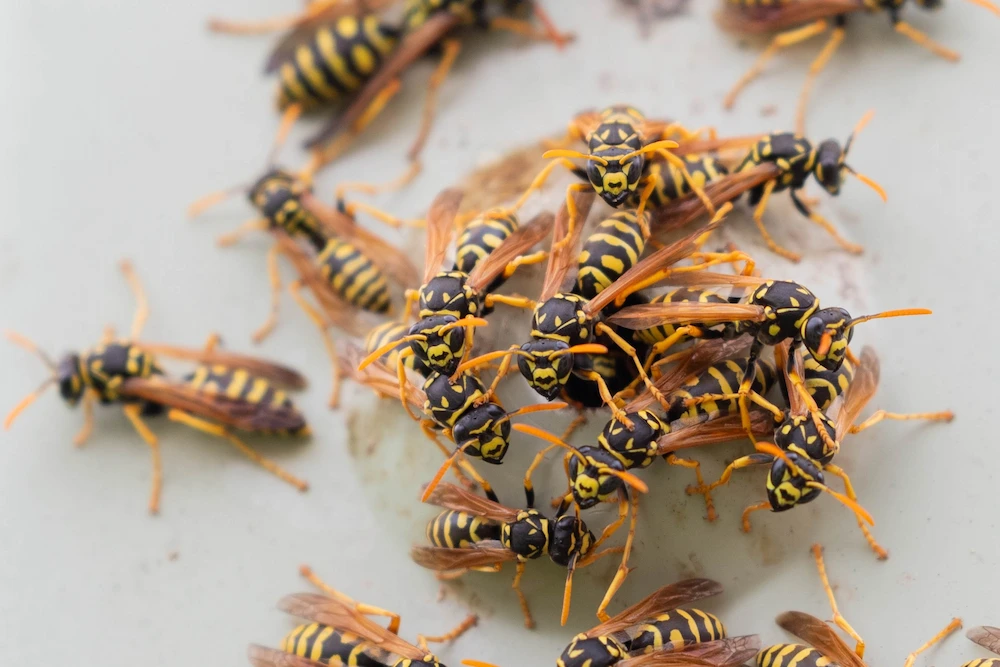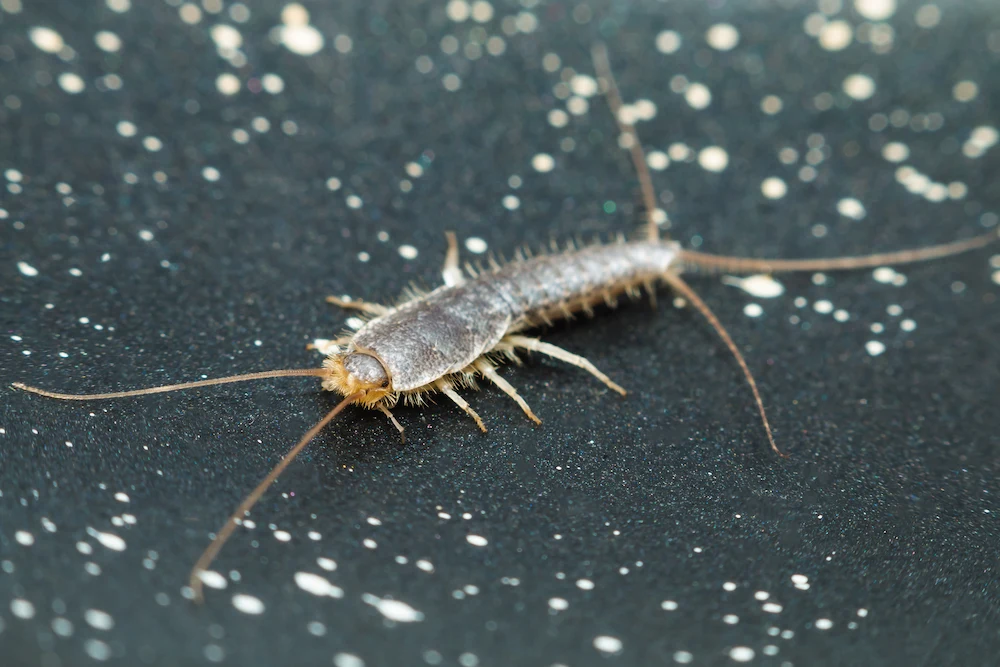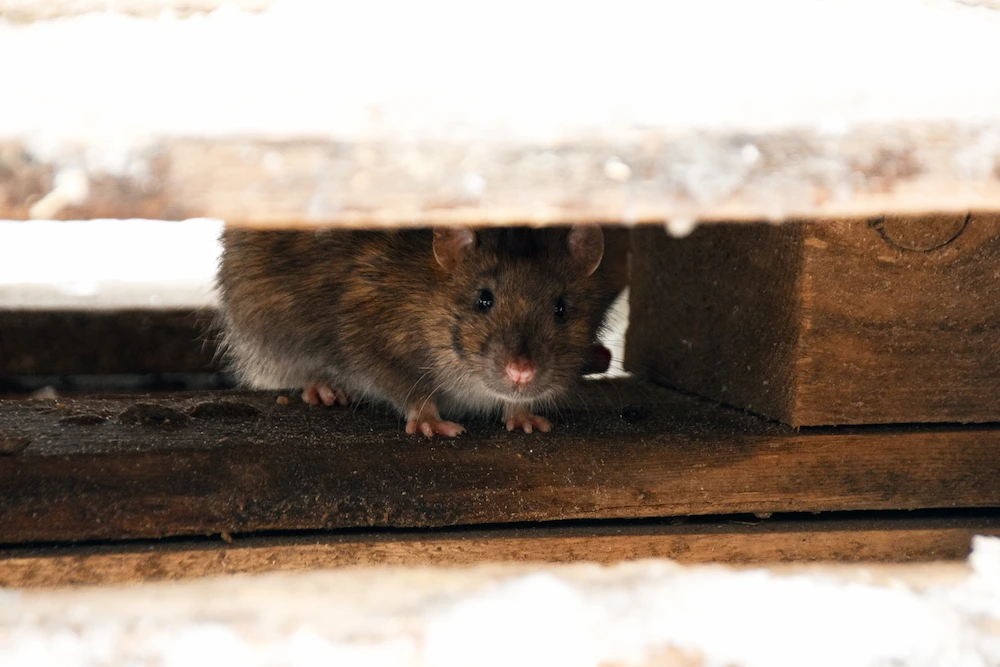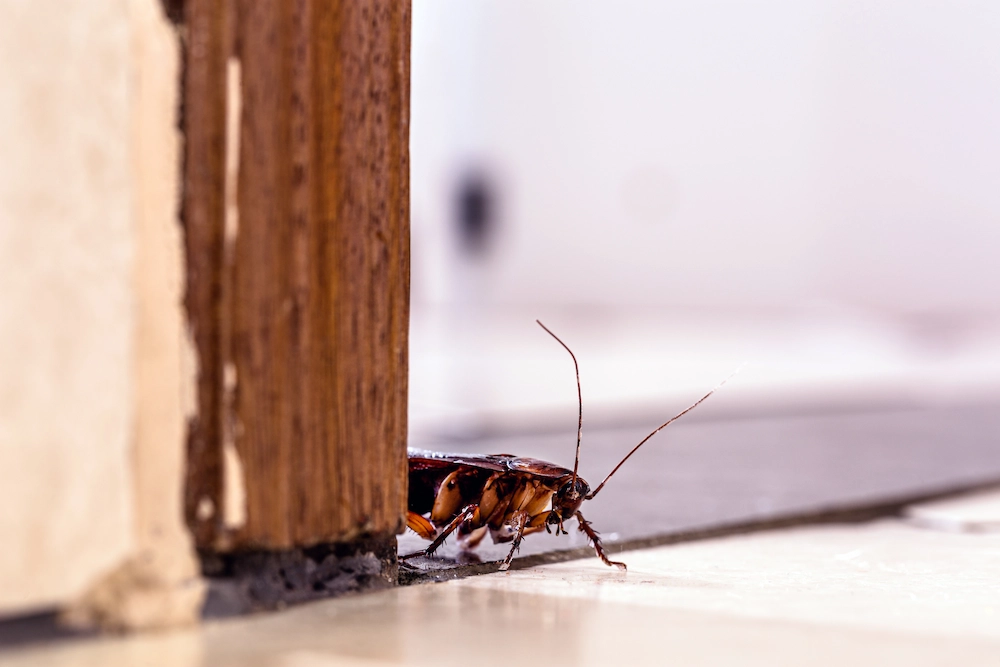Summary: Flowers are starting to have more and more nectar-collecting insects visit them, and it’s important to know the difference between these insects. This blog breaks down the basic differences between honey bees and yellow jackets, two of the most common stingers in the Pacific Northwest. Pointe Pest Control provides safe, efficient solutions to stinging pest problems.
When you think of spring, what’s the first thing that comes to mind?
Maybe it’s all of the flowers that signify the official end of winter by producing bright blossoms. Or it’s the return of professional baseball and the impressive athletic feats we see over the course of the season. It’s also nice that we can finally open up the windows without freezing!
But back to flowers. We aren’t the only ones who love fresh flowers in the warmer months. Out of all the insects that visit flowering plants, stinging insects are the most common across the board (all for that sweet flower nectar). However, stinging insects can look very similar to each other, which is a problem when some species are more temperamental than others.
Two similar-looking species are honey bees and yellow jackets, who could not be more opposite if they tried. In order to tell these stingers apart, let’s break down the core differences between docile honey bees and angry yellow jackets.
Appearance
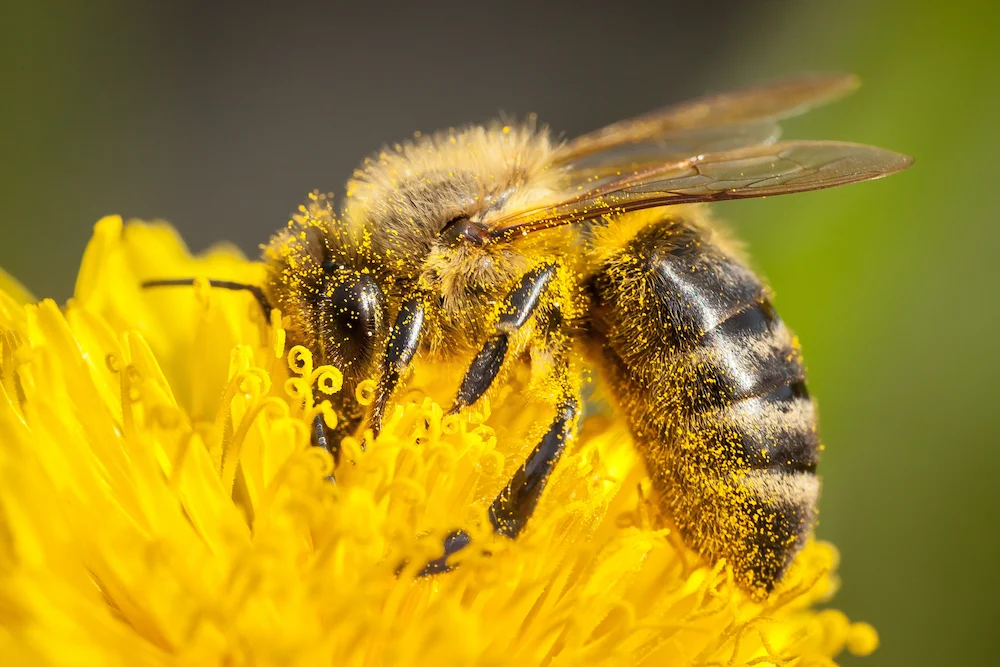
Honey Bees: These insects look like the most stereotypical version of a bee. They’re golden brown with black stripes and covered in fuzzy hair. Honey bees have rounder bodies and wings than wasps. They lay their wings flat when they’re at rest, like when they’re on a flower or in their bustling hive.
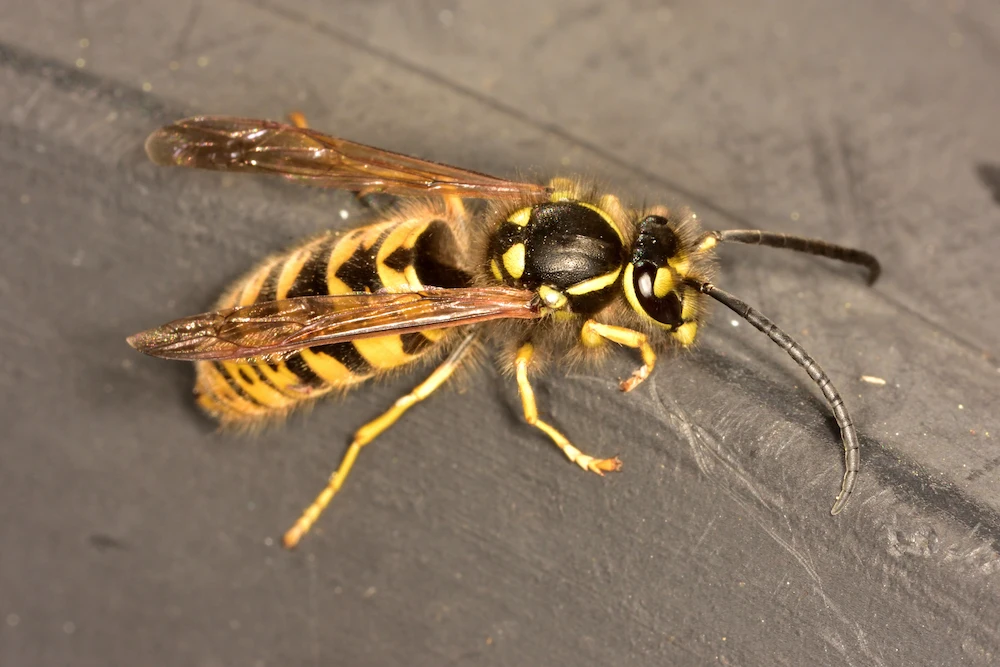
Yellow Jackets: True to their name, yellow jackets have a lot of bright yellow coloring with black stripes. They have skinny bodies with pinched waists, which lends well to their speed. They can be anywhere from 3/8 in. to 5/8 in., the queens always being larger than the workers. As opposed to honey bees, yellow jackets keep their wings up when they rest.
Colony
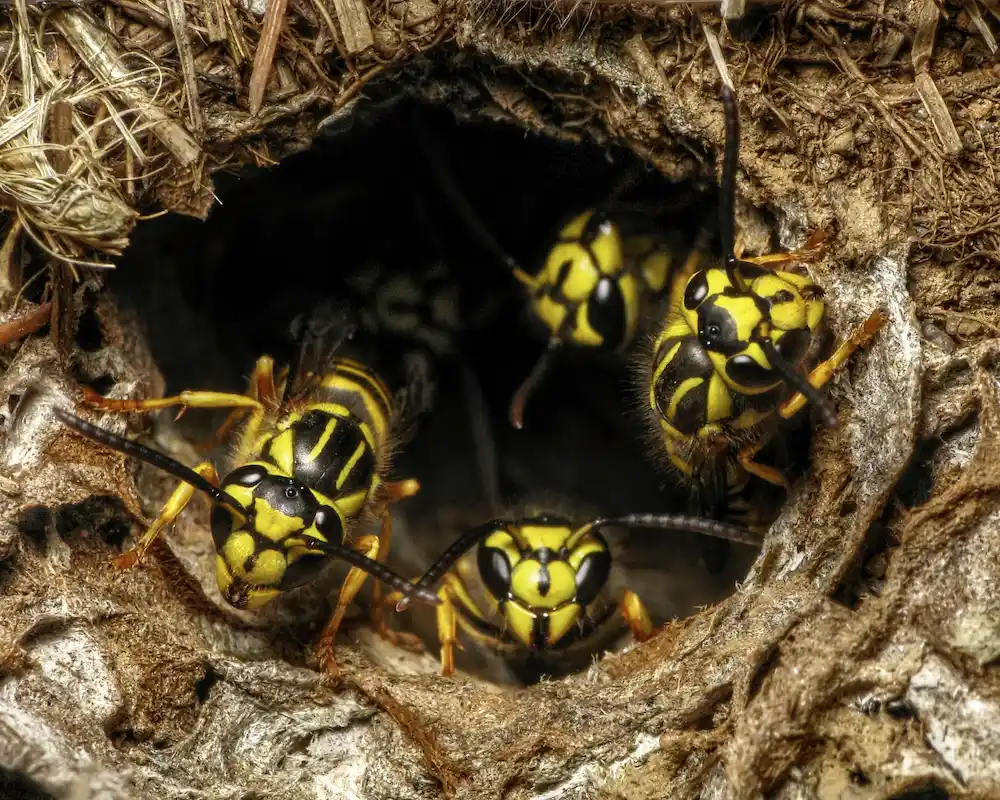
Honey Bees: Honey bees are eusocial, so they live in a colony produced by a queen, fertilized by drones, and maintained by workers. The queen lives 2 to 3 years, while workers live 6 weeks (summer) to 6 months (winter). Honey bees survive winter by huddling for body heat and staying near the warm honey. When active, honey bees use pheromones and “dances” to communicate.
Yellow Jackets: Although yellow jackets are also social, their classes aren’t as clearly defined. Queens produce thousands of eggs a year, which grow into sterile females that do everything else. They care for the young, build out the nest, and forage for food. Queens live for a year and are the only ones who overwinter, so they start a new colony in the spring. Workers die that same fall.
Nest
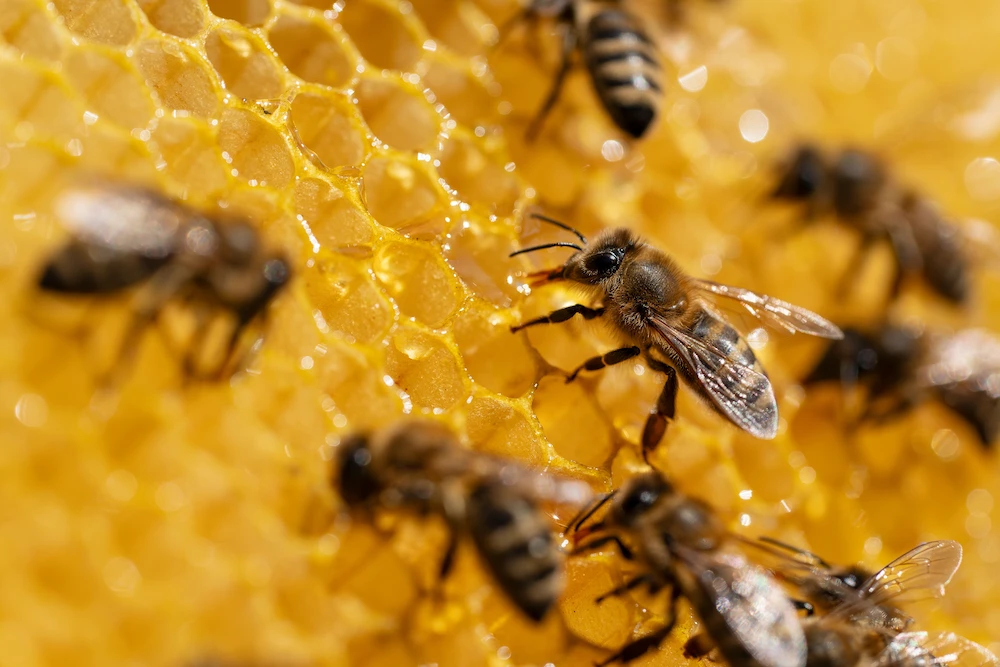
Honey Bees: Honey bees make their hives out of beeswax, which is secreted from their glands. They build hives in dark, deep spaces that give the colony room to grow. Honey bee hives are usually found in hollow trees, rock crevices, eaves, and concrete blocks. They don’t like to nest underground, so their hives are elevated at least a little. Inside each hive are honeycombs to store honey and young larvae.
Yellow Jackets: Conversely, yellow jackets often build their nests in underground burrows for extra security. They also like to live inside walls, cavities, and thick brush. Workers build these nests out of chewed wood and their saliva. The entrance is the size of a nickel, and it’s constantly used by busy workers. Since the colony dies out before winter, yellow jacket nests are only used once.
Diet
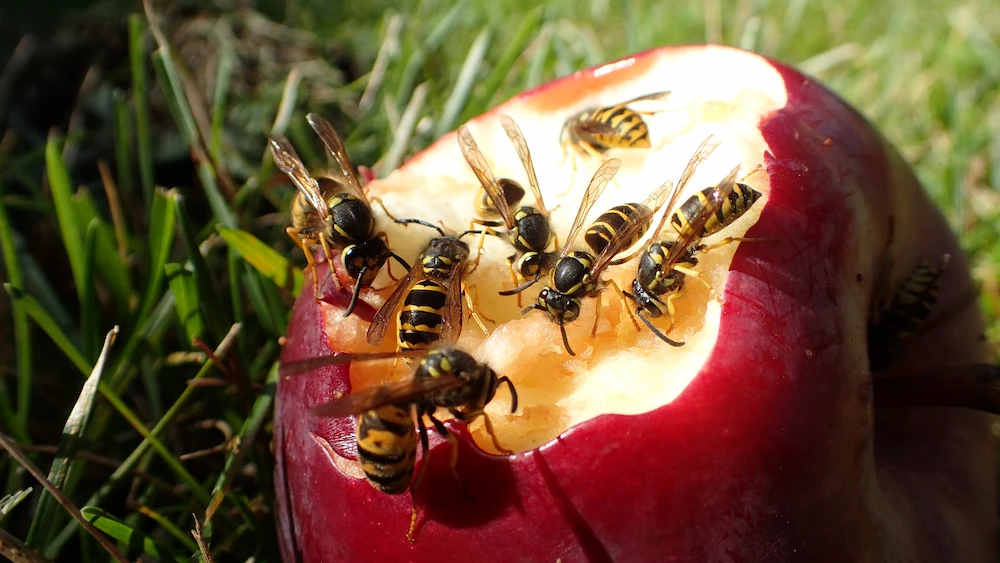
Honey Bees: Foragers collect nectar and pollen from nearby flowers in order to make honey. Nectar is deposited into a cell, then fanned by a bee’s wings to dehydrate and become honey. Honey is their main food source (besides nectar), especially in winter when they can’t visit flowers. They also enjoy bee bread that’s made of pollen, honey, and enzymes from the bee’s glands.
Yellow Jackets: Yellow jackets also love nectar, but their diet is more varied. They live on protein and sugar — aka “meats and sweets.” In addition to nectar and fruits, workers eat other insects. Their favorites include grubs, flies, caterpillars, and spiders. Any trash cans and dog food bowls within 1,000 feet of their nests are also common food sources.
Demeanor
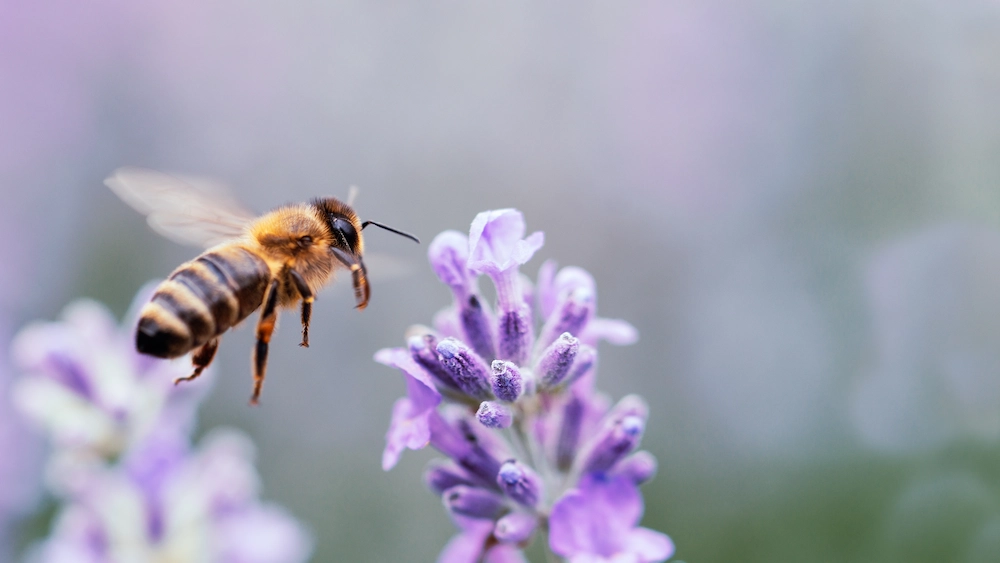
Honey Bees: Honey bees are the more appealing of the bunch in terms of their demeanor. They’re pretty docile and will only sting when their colony and nest are threatened. Worker bees protect their queen and brood with their lives — literally (more on this later). In larger honey bee colonies, they’ll station a couple of workers near the nest entrance as guards.
Yellow Jackets: We don’t need to tell you how different yellow jackets are in terms of attitude. They’re aggressive and extremely defensive. When there’s an “enemy” near their colony or nest, it’s all systems go. They release alarm pheromones to call the rest of their colony to defend the group. Yellow jackets are even angrier in late summer. They have less food sources, so these pests get hangry!
Flight
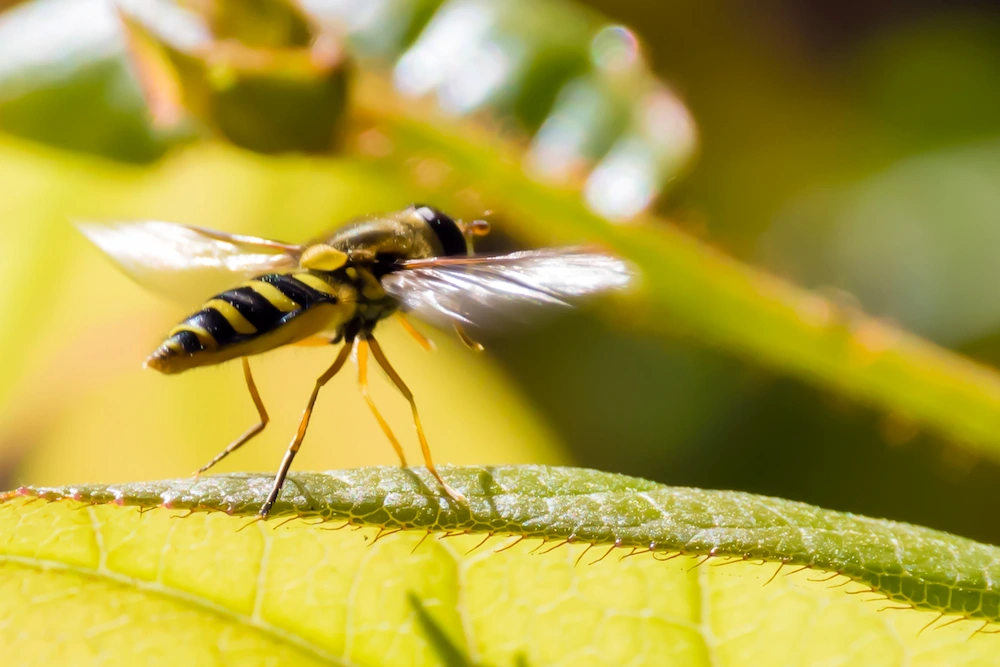
Honey Bees: Honey bees look like peaceful creatures, slowly buzzing around our yards and whatnot. They spend most of their time near flowers because their food sources and honey supplies all come from these plants. These insects fly faster when they’re angry, so a group of defensive honey bees move with more purpose than usual.
Yellow Jackets: These quick pests are temperamental and get annoyed at the drop of a hat. They’re even angrier in hot and dry weather since the warmth gives them more energy. Since yellow jackets are always on defense, they naturally fly faster and in erratic patterns. The underground nests are unfortunately easy to disturb, especially if it’s in the lawn or garden.
Sting
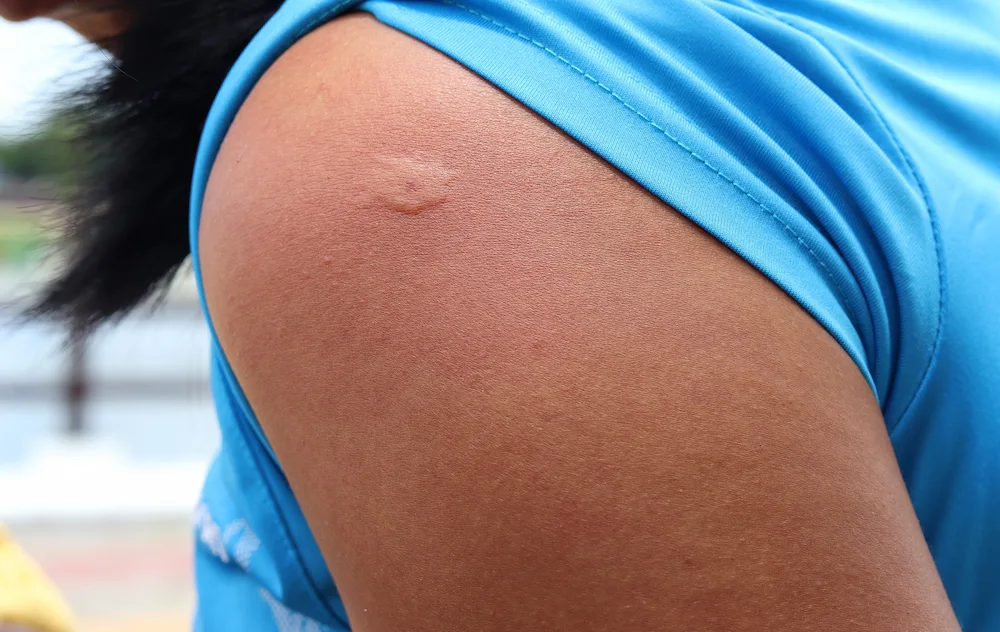
Honey Bees: These bees warn their enemies by basically bumping them with their bodies; if the enemy doesn’t move, the bees might start stinging. Honey bees die after stinging once, so they don’t want to sting without cause. The bee’s barbed stinger sticks in our skin and rips out the back half of the bee — including its digestive system — so it can’t survive.
Yellow Jackets: On the opposite end of the spectrum, yellow jackets can sting multiple times and won’t hesitate to do so. These pests even chase their victims until they can’t anymore. As you might guess, these pests sting a lot of people every year. We hear a lot about bee sting allergies, but a lot of people are also allergic to yellow jackets since their venom is similar.
On a related note, the pain of bee and yellow jacket stings is alleviated by washing the site with soap and water. If it’s a bee sting, remove the stinger by scraping it with a card to keep it from releasing more venom. If you or anyone in your home is allergic to stinging pests, use caution around bees and wasps.
Please seek medical attention immediately if you have symptoms (swelling, fever, trouble breathing, etc.) after being stung.
Service
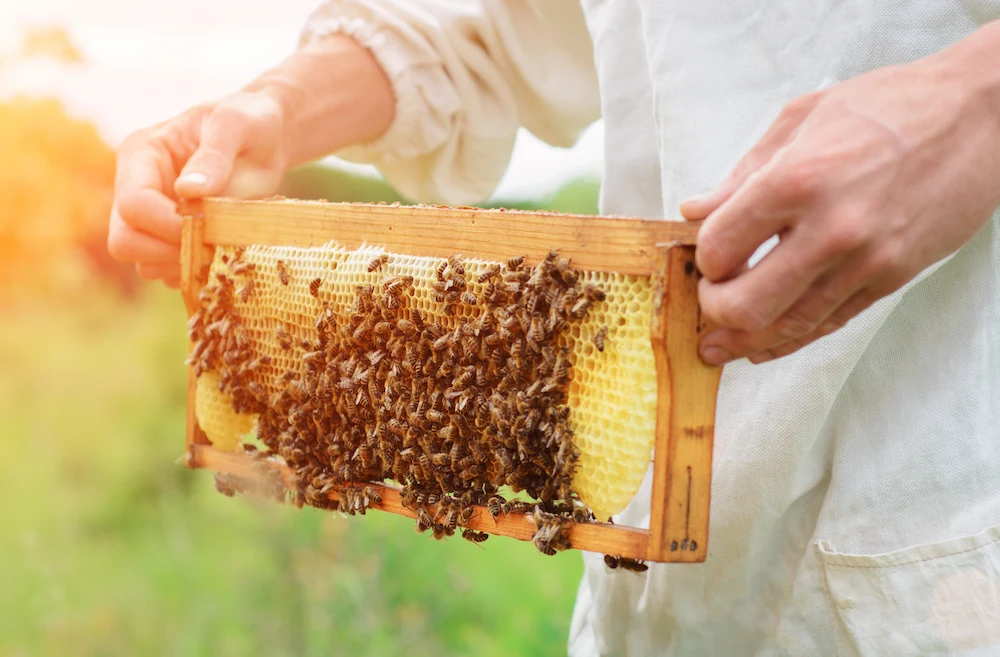
Honey Bees: You would be hard-pressed to find a pest control service that kills honey bees. That’s because these pests are beneficial pollinators and don’t have the largest populations, so we don’t want to really get rid of them. But it’s completely understandable to want a honey bee hive removed from your yard. This is often handled by local beekeepers or pest specialists.
On that note, remember the “Bee Guy” from last year’s Diamondbacks-Dodgers game (coincidentally, a year ago today)? Talk about an efficient removal!
Yellow Jackets: Thankfully, there are plenty of brave pest control technicians who treat and eliminate yellow jacket colonies. It’s strongly recommended to leave yellow jacket control to the experts. These pests are instantly angry when they’re messed with (as we’ve discussed), so it’s not worth it to try DIY nest removal. If you have a yellow jacket issue, contact your local pest professionals — like Pointe Pest Control.
Take the Sting Out of Spring with Pointe!
When you need fast relief from stinging pests, call in the pros! At Pointe Pest Control, our licensed technicians have efficient solutions for PNW pest problems. We take the proper steps to ensure everyone’s safety when we treat stinging insects. There are a lot of risks with DIY nest removal, especially if anyone in your home is allergic to bee or wasp stings.
When you choose Pointe for your stinging pest control, you can rest assured that your pest issue will be handled with the utmost efficiency and care. Contact us for a free quote on our reliable services, and say goodbye to the worries of springtime stings!
Citations
Brenner, A. & Grand, L. (2020, August). Awareness is key to avoiding yellowjackets. Oregon State University. Available at https://extension.oregonstate.edu/forests/health-management/awareness-key-avoiding-yellowjackets (Accessed on April 21, 2025).
Derrick, S. (2023, September 5). Honey bee vs yellow jacket: Top 5 unique features. Blythewood Bee Company. Available at https://blythewoodbeecompany.com/blogs/news/honey-bee-vs-yellow-jacket?srsltid=AfmBOoq0BEsJPNDMUEzc_28GRjRA_1JhVYojRjvP_gO965wJH9RUHrzQ (Accessed on April 21, 2025).
Honey bee or yellow jacket?. (2018, April 19). Mississippi State University Extension. Retrieved April 21, 2025, from https://extension.msstate.edu/blog/honey-bee-or-yellow-jacket
Ross, H. (2024, August 6). Honey bee vs. yellow jacket: 6 main differences explained. AZ Animals. Available at https://a-z-animals.com/animals/comparison/honey-bee-vs-yellow-jacket/ (Accessed on April 21, 2025).
What’s the difference?: Honeybee vs. yellow jacket. (2024, July 19). Forest Preserve District Will County. Retrieved April 21, 2025, from https://reconnectwithnature.org/news-events/the-buzz/whats-the-difference-honeybee-vs-yellow-jacket/

